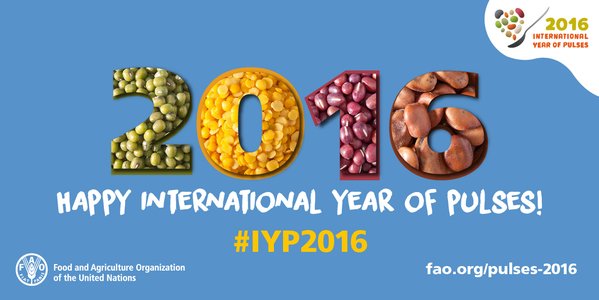-
About
- Our Work
- Get Involved
- Stay Updated
Pulses: Crux to a Sustainable Future

Presently 800 million of the total world population goes to bed with a hungry stomach. Furthermore, it is assumed that population of the world will be at pinnacle (9.1 billion) by 2050 which will require a spectacular rise in food production, at least by 70%. Feeding this huge population with reigning matters like green house gas emissions and climate change in consideration is really a hard nut to crack.
Considering all these facts the 68th general assembly of UNO marked 2016 as the international year of pulses year with an objective of apprising the globe about the nutritional importance of pulses and boost up their production, finally contributing to sustainable future through these nutritious seed.
What are pulses?
Pulses are leguminous crops cultivated for their dry grains. They have been staple human diet since the dawn of civilization. People from Indian used lentils and chickpeas as dal, the Japanese and Chinese had mung, aduki, and young soybeans in their meal, the Persian ate lentils and the Greek preferred lima beans.
Nutritionally, these are excellent source of protein, fiber, vitamins, micronutrient , carbohydrate and fat . Due to their higher nutritional quality even the people from poor country can have them as a rich source of protein as the people there can’t afford high energy expensive protein foods like meat, fish, vegetable or fruits. With these nutritional benefits in one hand pulses are amenable to multiple cropping systems providing a strong aegis against crop failure by revitalizing soil nutrient through nitrogen fixation and increment in phosphorus availability.
Due to their expansive root system they also help in improving soil structure and dwindle its erosion too. They are even used as in situ source of green manure to help increase the organic matter content in soil. So the fact that they posses excellent nutrient quality and improve the edaphic factors creates a strong base of food security for present and future as well. Reckoning these crops as an important source of protein farmers also use them as feed in livestock industry too (25% of total production). With these ample benefits the propensity of farmers towards the production of these high value crops is increasing. Recent data show their annual production of 64 million tons in 69.29 ha of land with India as the leading country to produce them. Regarding our country the production of pulses is relatively higher. Nepal ranks as fifth after Canada, India, Australia and turkey as major producers of lentil (one of the major pulse).
Though pulses are both affordable and nutritious still their rate of production is increasing at a sluggish pace. The main reason behind this is the relatively lower biomass production from their cultivation due to quick transport of protein from foliage to seed and translocation of 30 -50% of the photosynthate directly to root nodules. Similarly these high value crops have relatively smaller life span with maximum nutrient content in them which makes it mandatory to uptake nutrient at rapid pace requiring them to be grown in highly nutritious soil in well managed way unlike cereals or other crops which can be easily grown in soil with lesser nutrition. Likewise problems of low quality seeds, pests, diseases, weeds, harvesting difficulties due to asynchronous maturity of pods are some of the other causes for their lower production.
Organization like FAO, CIGAR in collaboration with government, stakeholders and other relevant organizations are trying to ease the production process of pulses and further increase their production and consumption amount. As an example, different scientists from these organizations are trying to develop anodulated varieties which are expected to raise the yield to considerable extent.Likewise efforts to develop short duration varieties are also made in order to include them in relay cropping and sequential cropping.
This chain of efforts should be given continuity at an accelerating pace as most part of the world still pervades in grief of malnutrition and hunger. Further efforts can be made to heave the production through a good rapport among various organizations, government and farmers. Addtionally, relevant researches with good extension can be a common major effort world widely. As for the developing country adoption of same old traditional technology in production process has been a major hurdle for satisfactory production. So, introduction and transfer of proper modern technology might aid in increasing the production to a significant extent. Stabilization of prices, provision of quality seed, adoption of seed quarantine measures, effective steps for alleviating pests and diseases, sowing in optimum, date, time and spacing are some other efforts to be made.
So the world resides in poverty, it resides in hunger, it resides in pathetic malnutrition. Though a man from a poor country may not be able to afford meat as a source of protein, he might be able to afford a handful of pulses lending the same nutrition. So let’s promote pulses, protect future, prevent malnutrition and celebrate IYP2016 with pulses!
About the author
Related Posts
Comments
No comments made yet. Be the first to submit a commentBy accepting you will be accessing a service provided by a third-party external to https://www.ypard.net/
Get in touch
Email: [email protected]
YPARD Global Coordination UnitHosted by AGRIDEA and the Czech University of Life Sciences Prague
Lausanne, Switzerland and Prague, Czech Republic - Our Work


